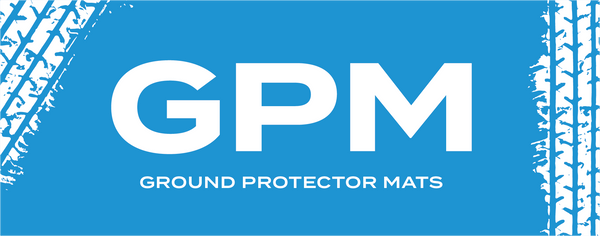Ground Protector Mats Demo Video
Reduce Landscaping & Lawn Repair Costs
In construction the focus is often on building up, but what about the ground down below? Heavy equipment and constant foot traffic wreak havoc on landscaping, leading to costly repairs once the project wraps up. Here's where Ground Protector mats step in, offering a preventive solution to a common problem.
The Impact of Construction on Landscaping
Before diving into solutions, let’s talk about the problem. Construction, repairs, and contracting work particularly in residential areas or on commercial sites with existing landscaping, can leave a lasting mark on the environment:
- Soil Compaction: Heavy machines compact soil, making it hard for plants to grow back and for water to penetrate the ground. This may not be obvious immediately as the damage takes some time to reveal itself via the plant and tree health.
- Physical Damage: Tires and tracks tear up grass, plants, and even smaller trees, leading to a barren or damaged landscape. Often workers or operators may be renting the equipment or not familiar with the location and can easily cause unforseen damages to the property.
- Chemical Spills: Construction often involves substances that can be harmful to plants and soil health. Accidental spills of fluids for machinery, concrete, or other caustic substances can be alleviated and stopped with our Ground Protector ground protection mats.
Enter Ground Protector Mats
Ground Protector mats act as a shield for the landscaping, yard, lawn, turd, and topsoil mitigating these impacts. Here’s what makes them particularly effective:
- Load Distribution: They spread out the weight of heavy equipment, reducing soil compaction and physical damage to the turf. This seems obvious but is what makes the mats effective at protecting against the forces of tracked and wheeled equipment.
- Surface Protection: They create a barrier between the equipment and the ground, guarding against scrapes, spills, and erosion. This protects not just against ruts and wear from equipment but also from workers and operators carrying supplies or materials.
- Reusability: Unlike makeshift solutions, these mats can be used repeatedly across different sites, offering a sustainable option. They do not bind the feet like tarps or plastic and won't rip or tear. Our mats are also light enough to use daily but also heavy enough to more accurately remain in place during adverse weather conditions. Professionals choose to use ground protection mats from Ground Protector because they know it's a solid investment.
Benefits Beyond the Basics
The advantages of using Ground Protector mats extend beyond just keeping the grass green:
- Cost Savings: Reducing damage means less money spent on restoring landscaping post-construction. This includes replanting, reseeding, and soil treatments.
- Time Efficiency: Projects can proceed faster when less time is devoted to mitigating environmental impact and repairing landscape features. EIR? No problem! Use Ground Protector to mitigate any issues.
- Environmental Responsibility: Protecting the existing terrain aligns with green building practices and community standards for environmental care. Rather than trying to coax a landscape back after destruction our mats protect the underlying surface as best as possible.
Real-World Applications
In scenarios ranging from residential backyard projects to large-scale commercial builds, Ground Protector mats have shown their worth. By preserving the original landscaping, these mats help maintain property values and community aesthetics. Furthermore, they minimize the disturbance to local wildlife and ecosystems, aligning construction projects with broader environmental goals.
A Grounded Approach to Construction
As the construction industry continues to evolve, so too does its approach to managing environmental impact. Ground Protector mats represent a significant step forward, offering a practical solution that benefits both the project at hand and the surrounding landscape. By incorporating these mats into their standard practices, construction professionals can reduce the need for post-construction landscaping repairs, saving time, money, and the environment in the process.
